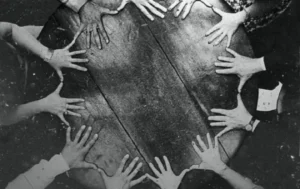Necromancy, a term that often evokes images of dark arts and mysterious rites, has been a topic of both fear and fascination through the ages. This practice, rooted in ancient mythologies and often associated with the summoning of spirits and reanimating the dead, continues to capture the imagination of many.
But beyond the myths and the folklore, what is necromancy really about, and can it truly bring the dead back to life? Let’s delve into the historical and cultural perspectives of necromancy to understand its possibilities and limitations.
Understanding Necromancy
Necromancy is traditionally understood as a form of magic used to communicate with the dead, primarily to predict the future or uncover hidden knowledge. Historically, necromancers would perform elaborate rituals intended to call forth the spirits of the deceased. These rituals could involve incantations, offerings, and the use of symbolic objects thought to hold power over the spirits.
Historical Context of Necromancy
The practice of necromancy can be traced back to ancient civilizations such as Egypt, Greece, and Babylon. In ancient Egypt, for instance, the “Book of the Dead” was a guide meant to equip the deceased with knowledge and spells for the afterlife. Similarly, the Greeks had rituals dedicated to the god of the underworld, Hades, and his retinue, seeking their favor or knowledge.
The Myth vs. The Reality
While necromancy is rich in cultural lore, it’s important to distinguish between mythological accounts and the metaphysical reality. The myths often depict necromancers as having the power to physically resurrect the dead. However, in reality, these accounts are symbolic. The rituals of necromancy more commonly relate to spiritual contact, which is vastly different from the physical resurrection often depicted in horror films and fantasy novels.
Necromancy in Modern Times
In modern times, the concept of necromancy has shifted somewhat. It is often viewed through the lens of spiritualism rather than the dark arts. Many who study or practice the modern equivalents of necromancy do not literally seek to bring the dead back to physical life. Instead, they focus on spiritual communication, seeking closure, understanding, or guidance from the deceased’s spirit.
The Ethical and Moral Implications
Necromancy raises numerous ethical and moral questions. The idea of contacting the dead can be seen as intrusive or disrespectful to some cultures and religions that emphasize letting the departed rest in peace. Furthermore, the use of necromancy for personal gain is often viewed negatively, seen as exploiting the spiritual realm or the memories of the deceased.
The Psychological Perspective
From a psychological standpoint, the interest in necromancy can often be linked to grief and the human desire to cling to loved ones who have passed away. Engaging in necromantic practices can be a way for individuals to cope with loss, providing them with a sense of connection to those no longer physically present.
Science and Necromancy
Scientifically, there is no evidence to support the ability to bring the dead back to life. The laws of biology and physics as we understand them today firmly place necromancy within the realm of the supernatural and fictional. However, exploring these concepts can be useful in understanding human beliefs and the nature of life and death.
Conclusion: The Real Power of Necromancy
In conclusion, while necromancy cannot physically resurrect the dead, its real power lies in its symbolic significance and its role in cultural narratives about life, death, and the afterlife. Necromancy, as a theme, prompts us to explore our understanding of death and our hopes for some form of continuity beyond it.
By examining necromancy through a historical and cultural lens, we gain insight into human nature and our varied responses to the mysteries of life and death. It reminds us of our deep-seated desires to understand the unknown and our continual quest to reach beyond the veil that separates the living from the dead.
While necromancy remains a topic of myth and legend, its study reveals much about our values, fears, and the endless human quest for knowledge. As we continue to explore these ancient practices, we not only uncover more about our past but also reflect on the ethical and spiritual implications of such endeavors in our contemporary world.





